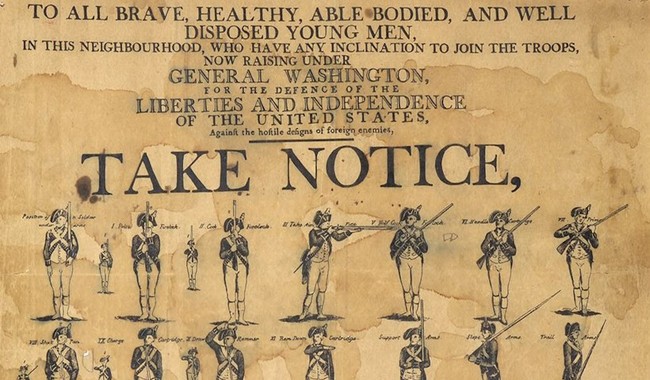
As night fell on the American army on January 2, 1777, its commander, General George Washington, faced a dilemma. Washington had just won a signal victory at the Second Battle of Trenton. There, Washington had lured British General Charles Cornwallis onto prepared defenses after attriting the British forces in a series of delaying actions (Five Mile Run, Little Shabbakunk Creek, and Stockton Hollow), harassing them with riflemen and militia and finally administering a thorough thrashing to the British Army and owning Corwallis hard enough that he got a bill of sale. See January 2, 1777. The Second Battle of Trenton and George Washington at the Top of His Game.
Advertisement
Washington had chosen his position with a canniness that maximized his army’s preference for fighting from a strong defensive position (Washington constantly tried to recreate Bunker Hill in his battles; in fact, the entire Long Island campaign is really one attempt after another to lure the British into a headlong attack. Second, Trenton is as close as he ever came to doing this). He was entrenched on high ground. Assupink Creek was running high and could only be crossed at a few fords and a single bridge. He also minimized the ability of his army to run at the sight of British bayonets, an unfortunate trait the Continental Army possessed until the hard Valley Forge winter under von Steuben and demonstrated at its coming-of-age battle at Monmouth. (I posted on this battle a while back, June 28, 1778. Battle of Monmouth.) While Assupink Creek could only be crossed in very few places by the British, the Delaware River, behind the Continental lines, couldn’t be crossed at all. If Washington’s line didn’t hold, then every man was going to be killed or imprisoned on a prison hulk in New York Harbor.
Pressing to finish Washington before dark, the British did a rudimentary reconnaissance and attacked. Cornwallis attempted to flank Washington by sending Hessian Jaegers and British Light Infantry against the Continental outposts and the lower fords on the Assupink. They were stopped in their tracks. Then Hessian grenadiers were sent in column to attack over the lone bridge. Continental musket and artillery soon stacked the bridge with corpses. Another attack was made on the bridge, this one by British infantry. Washington’s chief of artillery, the rotund, bespectacled Boston bookseller Henry Knox, massed his artillery and drove off the attackers.
Advertisement
Cornwallis was reluctant to attempt a night attack and resolved to resume the fight the next day. At his council of war, there was some debate. His Quartermaster General (a much different position in those days than today) and Eton schoolmate, Sir William Erskine, counseled an immediate attack. Perhaps mindful of Washington’s penchant for slipping away when the British thought they had him cornered, Erskine said, “My Lord, if you trust those people tonight, you will see nothing of them in the morning.”
Cornwallis, probably mindful of the drubbing he’d suffered over the course of the approach march and during the battle, wasn’t anxious to try a night attack. He said, “We’ve got the Old Fox safe now. We’ll go over and bag him in the morning.”
Where Corwallis gave short shrift to dissent, the debate in Washington’s council of war was much more vibrant. They held a DEI session, explored their white rage, and had a lively sexual harassment prevention session. Just kidding. There were two factions. One side counseled immediate retreat. Cornwallis was unaware of the sad condition of Washington’s right wing, and there was a palpable fear that it might collapse when the general engagement resumed in the morning. If the right wing collapsed, the entire American army would be pinned up against the Delaware River with no way out. The second faction wanted to stand and fight. They had administered a sharp blow to the British on the morning after Christmas (see December 1776: America’s First Christmas, the Victory That Marked It, and the Heroes That Made It Happen) that made all British forces in southern New Jersey skittish. That day, they had killed or wounded over 400 British and Hessian soldiers at the cost of under 100 of their own. In the vernacular of my people, they were “feeling froggy.” They were sure they could stand their ground and win on the second day. Washington was inclined to this point of view, but rather than shutting down the debate, he let it continue. He knew he had to have a clear consensus from his major subordinate commanders on the next step if he was to keep his army in the field for the long haul.
Advertisement
At some point, General Arthur St. Clair, one of Washington’s most valued commanders, made a brilliant suggestion. (Sadly, St. Clair finished his military career in disgrace and humiliation after presiding over the worst-ever defeat of American forces by Indians at the hands of Little Turtle and the Miami Confederacy at the Battle of the Wabash.) St. Clair commanded the battered right wing. While preparing his defense, his scouts discovered a network of roads leading to a crossing of Assupink Creek called Quaker Bridge. It was only six miles from that bridge to the British supply dump at Princeton. Why not, posed St. Clair, move right under the cover of darkness, swing around the British left flank, and fall on their depot at Princeton?
Washington had included some local civilians in his council, and they agreed that the flanking movement could be done. Joseph Reed, Washington’s adjutant, offered that he’d led a patrol of the Philadelphia Light Horse around the British left as far as his alma mater, Princeton University, earlier in the day and had encountered no British troops.
The idea of a bold attack on Princeton took hold, and soon the council was discussing how to do it. In David Hackett Fischer’s “Washington’s Crossing,” he says, “One officer wrote, “General Washington highly approved it, nor was there one dissenting voice in the council.”
Advertisement
That night, behind a mask of blazing bonfires, rags were tied on wagon wheels, the wheels of artillery caissons, and horse’s hooves, and the Continental Army silently slipped around the British flank. The next morning, Washington’s army fell on the British supply depot at Princeton, inflicted over 400 casualties, and then moved to Morristown, NJ, and threatened to cut Cornwallis off from New York and his base of supply.
Owned for a second time and in danger of being repossessed, Cornwallis abandoned southern New Jersey and fell back on New Brunswick. This set the stage for the Forage War of the spring of 1777, which resulted in British troops retreating into New York and leaving what had looked like a badly beaten army in December 1776 in an excellent strategic position.

